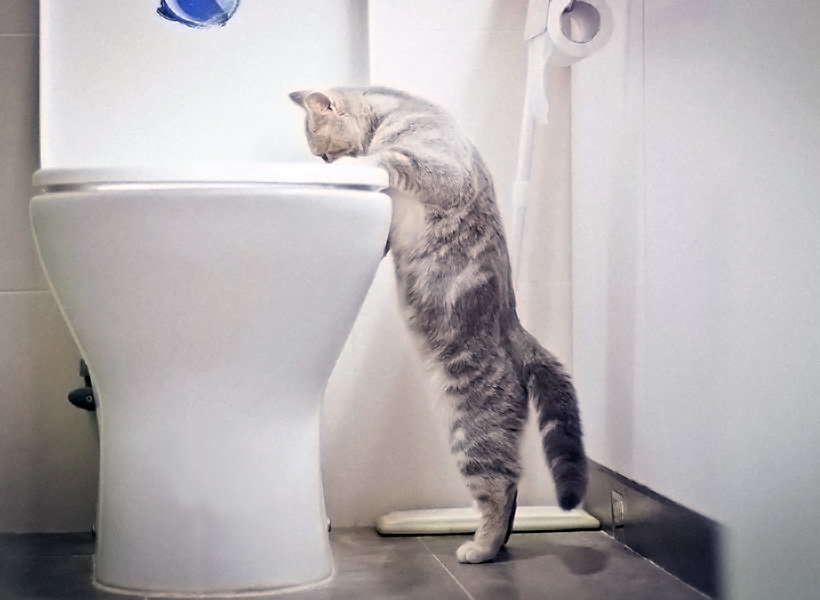My Significance of Not Getting rid of Animal Waste Down the Toilet
My Significance of Not Getting rid of Animal Waste Down the Toilet
Blog Article
Every person is bound to have their personal assumption on the subject of Can You Flush Dog and Cat Poo Down the Toilet?.

When it concerns getting rid of waste, specifically animal waste, lots of people frequently consider the convenient choice of flushing it down the toilet. Nevertheless, this apparently simple solution can have severe consequences for the atmosphere and public health. In this post, we'll discover why flushing animal waste down the bathroom is a poor concept and give alternate methods for appropriate disposal.
Intro
Proper waste disposal is essential for maintaining environmental sustainability and public health. While it may seem harmless to purge animal waste down the commode, it can bring about numerous concerns, both for the atmosphere and human wellness.
Risks of flushing animal waste
Ecological influence
Purging animal waste introduces dangerous germs and pathogens right into rivers, which can adversely influence aquatic ecosystems. These virus can pollute water sources and injury marine life, disrupting delicate ecological communities.
Public health worries
Pet waste consists of harmful germs such as E. coli and Salmonella, which can posture major health risks to people. Purging pet waste down the toilet can pollute water products, leading to the spread of diseases and infections.
Alternatives to flushing
Instead of flushing animal waste down the bathroom, there are several alternative disposal approaches that are a lot more environmentally friendly and sanitary.
Composting
Composting animal waste is an environmentally friendly way to take care of it. By composting, raw material is broken down into nutrient-rich dirt, which can be utilized to fertilize yards and plants.
Land fill disposal
Throwing away pet waste in a garbage dump is an additional alternative. While not as environmentally friendly as composting, it is a safer choice to flushing, as it stops the contamination of water sources.
Animal garbage disposal systems
There are specific pet garbage disposal systems available that securely and hygienically throw away animal waste. These systems commonly use enzymes to break down waste and get rid of smells.
Actions to correct animal waste disposal
To make certain proper disposal of animal waste, adhere to these actions:
Scooping and bagging waste
On a regular basis scoop and bag pet waste using naturally degradable bags. This stops waste from infecting the environment.
Utilizing assigned waste bins
Dispose of bagged animal waste in designated waste containers, such as compost bins or landfill bins. Avoid flushing it down the commode whatsoever costs.
Cleaning can and family pet areas frequently
Consistently tidy litter boxes and pet areas to avoid the accumulation of waste and bacteria. Usage pet-safe cleaning items to preserve health.
Benefits of correct disposal techniques
Taking on proper disposal approaches for animal waste offers a number of advantages:
Reduced environmental pollution
Appropriate disposal methods decrease the danger of environmental pollution, safeguarding waterways and environments from contamination
Reduced danger of water contamination.
By preventing flushing pet waste down the toilet, the danger of water contamination is significantly decreased, securing public health.
Boosted sanitation and hygiene
Appropriate disposal approaches advertise far better hygiene and health, developing a more secure setting for both human beings and pets.
Final thought
In conclusion, check here flushing pet waste down the commode is unsafe to the environment and public health. By embracing alternative disposal methods and adhering to appropriate waste administration practices, we can decrease the negative influence of animal waste and add to a cleaner, much healthier planet.
What To Do With Dog Poo – The Do's And Don'ts Of Disposing Of Faeces
Dog poo bins
Some councils provide dedicated dog waste bins in popular dog-walking areas that can take dog poo that has been bagged but you can legally dispose of dog waste in any public litter bin, as long as it is securely bagged. This also applies to your wheelie bin at home.
Do not flush
Water companies do not recommend flushing dog faeces down the toilet because certain parasites can survive the water processing treatment and are potentially harmful to humans. You should also never consider flushing dog poo that has been bagged down the toilet as the bags will not break down and instead create severe blockages in the sewage system.
In the woods
The Forestry Commission promotes a ‘stick and flick’ method for dealing with waste in the woods. This means finding a stick and using it to flick any poo from off the path so that it is out of the way of other walkers. You could also bury it as long as it is not in an area where there might be livestock.
Livestock
Parasites found in dog poo can be transmitted to livestock if they inadvertently eat infected faeces that has been left on grazing land. This could result in the death of sheep or abortion in cattle so you should always make sure you pick up your dog’s waste in fields where livestock could be present.

Consistently tidy litter boxes and pet areas to avoid the accumulation of waste and bacteria. Usage pet-safe cleaning items to preserve health.
Benefits of correct disposal techniques
Taking on proper disposal approaches for animal waste offers a number of advantages:
Reduced environmental pollution
Appropriate disposal methods decrease the danger of environmental pollution, safeguarding waterways and environments from contamination
Reduced danger of water contamination.
By preventing flushing pet waste down the toilet, the danger of water contamination is significantly decreased, securing public health.
Boosted sanitation and hygiene
Appropriate disposal approaches advertise far better hygiene and health, developing a more secure setting for both human beings and pets.
Final thought
In conclusion, check here flushing pet waste down the commode is unsafe to the environment and public health. By embracing alternative disposal methods and adhering to appropriate waste administration practices, we can decrease the negative influence of animal waste and add to a cleaner, much healthier planet.
What To Do With Dog Poo – The Do's And Don'ts Of Disposing Of Faeces
Dog poo bins
Some councils provide dedicated dog waste bins in popular dog-walking areas that can take dog poo that has been bagged but you can legally dispose of dog waste in any public litter bin, as long as it is securely bagged. This also applies to your wheelie bin at home.
Do not flush
Water companies do not recommend flushing dog faeces down the toilet because certain parasites can survive the water processing treatment and are potentially harmful to humans. You should also never consider flushing dog poo that has been bagged down the toilet as the bags will not break down and instead create severe blockages in the sewage system.
In the woods
The Forestry Commission promotes a ‘stick and flick’ method for dealing with waste in the woods. This means finding a stick and using it to flick any poo from off the path so that it is out of the way of other walkers. You could also bury it as long as it is not in an area where there might be livestock.
Livestock
Parasites found in dog poo can be transmitted to livestock if they inadvertently eat infected faeces that has been left on grazing land. This could result in the death of sheep or abortion in cattle so you should always make sure you pick up your dog’s waste in fields where livestock could be present.

I'm certainly very interested in Should you flush animal waste down the toilet and I'm hoping you enjoyed reading my piece. Kindly take a moment to distribute this blog if you liked it. Kudos for your time. Kindly come by our blog back soon.
Call Report this page